The Worst Invasive Plants You Should Never Grow
Updated: Feb. 02, 2023
Replace aggressive species with native plants that support your local wildlife. Make sure you avoid these invasive plants.
What Makes a Plant Invasive?
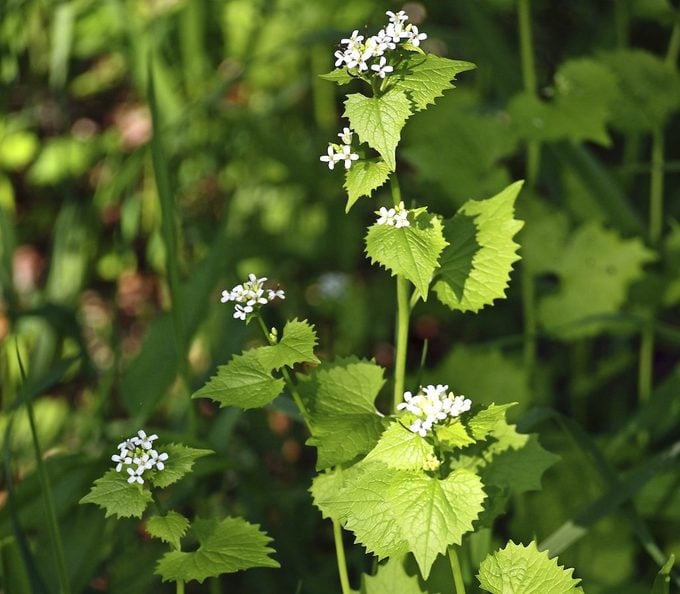
When you think of unwanted plants, dandelions, quack grass and other common weeds that bully their way into your yard and garden probably come to mind. But, occasionally, we inadvertently plant a seedy character that takes over the garden. They can be pretty, but the troublesome beauties known as invasive plants eventually escape backyard landscapes and creep into wetlands, woodlands and other natural spaces. Once they take root, they crowd out native plants that provide food and shelter for beneficial insects, birds and mammals living in those habitats.
As these bullies flourish and spread in an area, they compete with native species for moisture, sunlight and nutrients. This has contributed to the decline of 42 percent of endangered and threatened species. The presence of invasives also affects water quality, increases soil erosion and decreases a habitat’s diversity. Most invasive plants are labeled as low-maintenance wonders, like Eurasian honeysuckle and kudzu, and blooming beauties such as purple loosestrife and Dame’s rocket. But the same traits that allow them to thrive in your yard help them take over natural areas.
Never plant these invasive shrubs (and what to grow instead!)
What Should Gardeners Do About Invasive Plants?
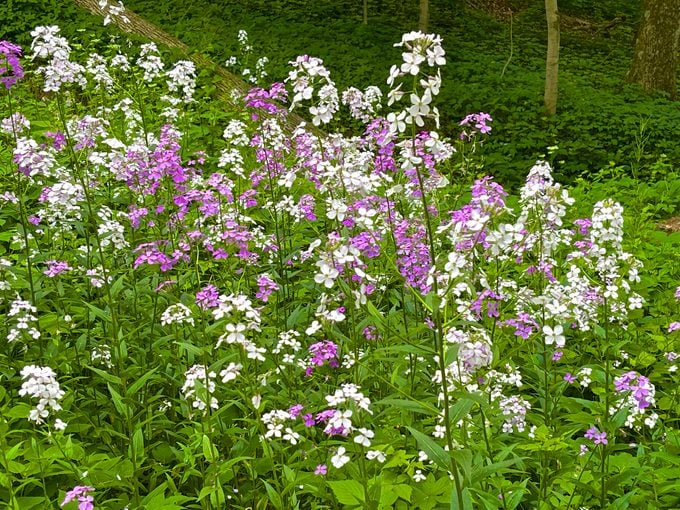
However, it’s easy to help stop the spread of invasives. Start by researching before you add new plants to your space. Check with your university extension service, local nature center or state department of natural resources to be sure the plant is not prohibited or should not be grown in your area. The next step is evaluating your current plants. Once you figure out what’s invasive, remove them from your property.
Consider the plants you’re decorating with, too. Door swags and wreaths that contain aggressive growers like teasel and oriental bittersweet also aid in the spread of unwanted plants. Continue to monitor your landscape after removing the inappropriate plants. Because seeds can remain viable in the soil for years or blow in from surrounding properties, look for new sprouts. Pull or dig them out as soon as they appear and enlist mulch where appropriate.
Avoid planting these irritating and poisonous plants.
Talk to your neighbors about the negative impact of invasive plants and encourage them to remove and replace problem plants. If everyone works together, invasive seed sources begin to dwindle and you all experience greater success. Consider joining or organizing a community weed-out to control the spread of invasives on an even wider scale. You’ll not only reduce the risk of plants taking over your own landscape, but help support the wildlife in your area and preserve the green spaces you and your community enjoy.
Eliminating invasives takes time and effort but the rewards are many. You may find wildflowers filling your woods after removing buckthorn, honeysuckle and garlic mustard. Some even uncover cherished heirloom plants once hidden by overgrowth. You never know what will pop up!
The Most Common Invasive Plants in North America
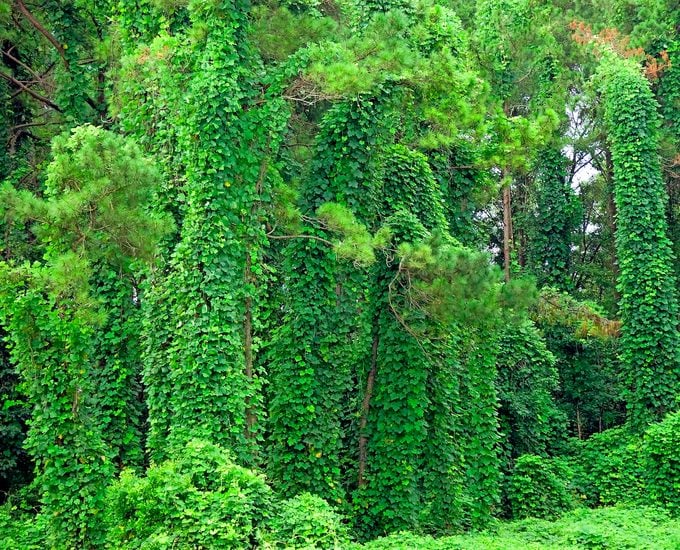
Many of these invasive plants are common in backyards and along roadsides across the United States. Whenever possible, remove them and replace them with native plants.
- Barberries
- Buckthorn
- Chinese and Japanese wisterias
- English ivy
- Garlic mustard
- Japanese honeysuckle
- Japanese knotweed
- Kudzu
- Oriental bittersweet
- Purple loosestrife
- Queen Anne’s lace
- Tree-of-heaven
Purple Loosestrife
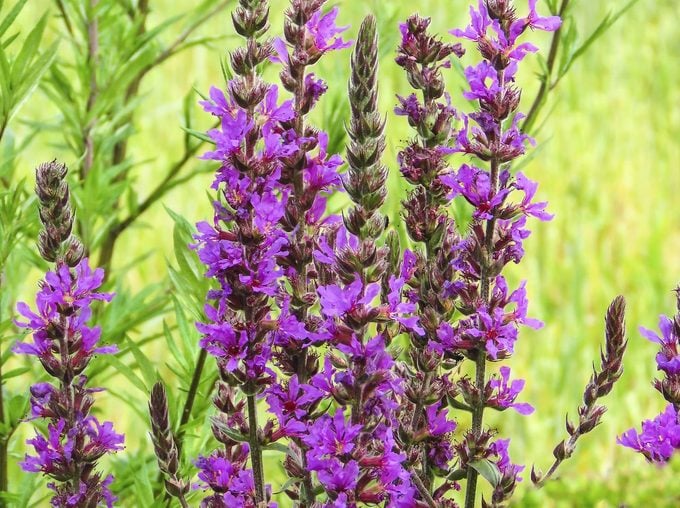
It’s covered with pretty, purple flower spikes from late summer through fall. A long-lived perennial, it adapts to a wide range of growing conditions. Plus, it makes a beautiful cut flower. It’s a gardener’s dream come true, right? Wrong!
I’m talking about purple loosestrife. And as many gardeners throughout the United States and Canada know, this invasive blooming plant, which has taken over many a backyard garden, has now taken to our natural wetlands. A vigorous grower, it crowds out native flowers, eliminating cover and essential food sources needed by wetland wildlife.
Buckthorn and Honeysuckle
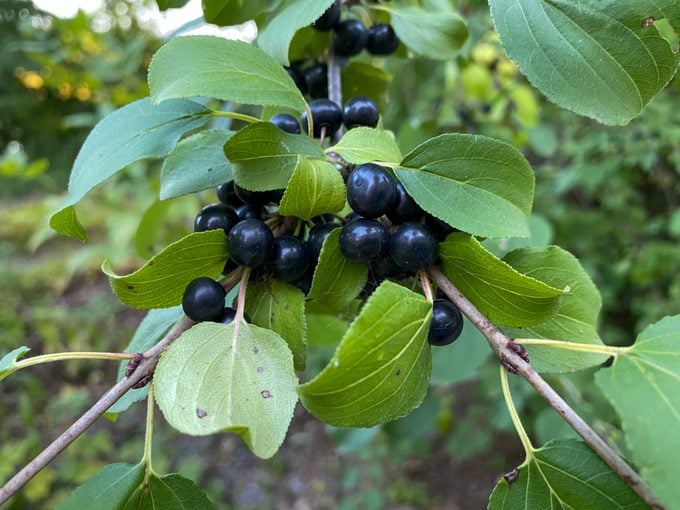
Purple loosestrife isn’t the only invasive plant causing problems in natural landscapes. Norway and Amur maples have joined buckthorn and non-native honeysuckle as woodland invaders. Birds eat buckthorn berries and distribute the seeds widely. Before long, hundreds of seedlings pop up, displacing native trees in forests and backyards. Plant these berry bushes and trees instead.
Canada thistle (Cirsium arvense) is another noxious one to watch out for.
Butterfly Bush

Keep in mind, however, that it’s possible for invasive plants in one area to struggle to survive in another. Butterfly bush, tamarisk and ivy are a few that are invasive plants in warmer locales but have a hard time making it in cold, wet or less- than-ideal growing conditions. Look for sterile, non-invasive cultivars of butterfly bush, such as Blue Chip.
The lesson here? Do a little research before adding new plants to your landscape. Select plants suited for the growing conditions in your backyard. Then, check with your local university extension service or an area plant nursery for a list of the worst invasive plants that plague your region.




















